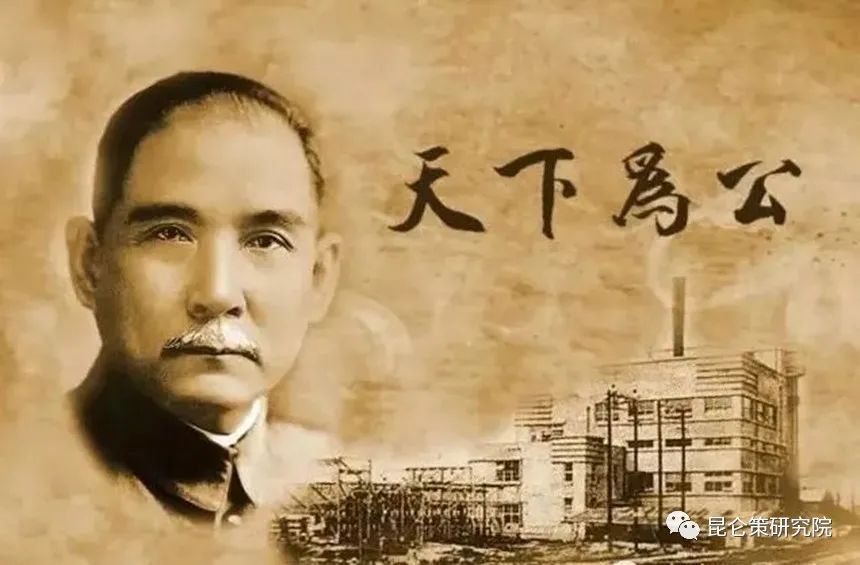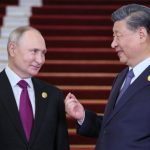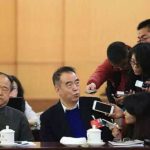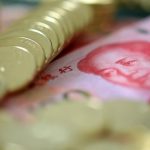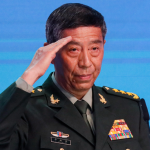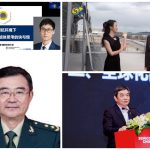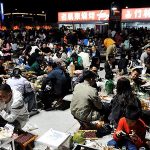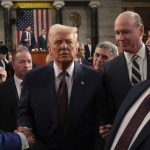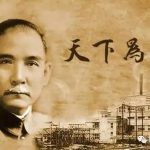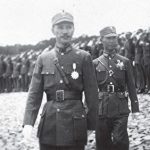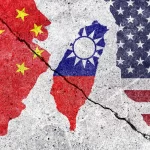By Ding Yi
In recent years, Sun Yat-sen has been criticized by some liberals among Chinese intellectuals. His policy of allying with the Soviet Union, and tolerating the Chinese Communist Party (CCP) is extremely controversial. Some people blame Sun for the founding of the People’s Republic of China in 1949, and some even believe that he had become communist himself in his later years. On the occasion of the 100th anniversary of Sun Yat-sen’s death, this author wrote a paper in response to the these claims of more than 20,000 words entitled “Rejecting Communism — An Analysis of Sun Yat-sen’s Thinking and an Evaluation of His Policies” (attached below).This short essay summarizes the main ideas of the paper, though the order of the arguments has been adjusted.
The policy of alliance with the Soviet Union and tolerance of the CCP began in January 1923 when Sun Yat-sen and Soviet representative Adolph Joffe issued a joint declaration in Shanghai. It’s first article stated that “Communist organizations and even the Soviet system cannot, in fact, be applied to China because there are no conditions in China that would allow such communism or the Soviet system to succeed.” This was the consensus view on the surface, but what was the actual situation?
The collection of declassified Soviet archives by the Russian Federation and published in Russia in 1994 is an important reference. These archives show that on the same day the above-mentioned declaration was issued, Joffe also wrote a top-secret document for the Soviet Union entitled “Joffe’s Views on the Prospects and Possible Consequences of Cooperation with Sun Yat-sen.” The entire document talked about Sun Yat-sen’s military and political plans for action and ongoing Sino-Soviet negotiations (mainly revolving around the Soviet Union’s stationing of troops in Mongolia and the issue of the Chinese Eastern Railway), without mentioning communist ideology at all. None of the documents sent from Joffe before or after this showed any intention to make China a communist.
Even the Politburo meeting of the Central Committee of the Soviet Communist Party on August 2, 1923 “instructed Comrade Borodin [Mikhail Borodin, Comintern agent in China and advisor to officials, including Sun Yat-Sen, in the 1920s] to follow the interests of China’s national liberation movement in his work with Sun Yat-sen and to never be obsessed with the goal of cultivating communism in China.” In summary, the Politburo of the Soviet Communist Party had a distinct pragmatic style during Sun Yat-sen’s alliance with the Soviet Union. In this regard, scholar Chen Zhihong pointed out in a paper published in 2023 that between the strategic interests of the regime and the “world revolution,” two often conflicting goals, the Soviet Union had realized in 1923 that the “world revolution” could not be achieved quickly, and the interests of the regime became the regime’s main consideration.
However, the Comintern, an extension of the Soviet Communist Party, had been looking for opportunities to make China communist. Although the Comintern was not a decision-maker in the Soviet Union, it used its influence as a liaison agency to try to push the Kuomintang to the left. In November 1923, the Comintern passed a resolution proposing that the Kuomintang should reinterpret its Three Principles of the People, replace nationalism with the theory of class revolution (“eliminate the oppression of the country’s warlord system,” “eliminate the cruel exploitation of the country’s capital,” “not suffer from the oppression of the country’s bourgeoisie.), and replace the moderate people’s-livelihood doctrine with extreme-left policies (nationalization of foreign and national industries, and direct distribution of landlords’ land to tenants). Sun Yat-sen rejected the Communist International’s meddling and, during the alliance with Russia, elaborated on his Three Principles of the People in 16 speeches, which were consistent with his previous statements before the alliance with the Soviet Union. He did not because of the alliance with the Soviet Union change his own views. After the establishment of the Republic of China, Sun’s nationalism was about building a nation together internally, and being neutral and independent externally. His civil-rights doctrine, in addition to his design of a five-power constitutional government structure, also included the implementation of the four major civil rights of election, recall, initiative, and referendum. His people’s-livelihood doctrine had always been about equalizing land rights (taxing the increased value of land to provide for social welfare) and controlling capital (monopolistic industries should be operated by the state). The details of these specific propositions are certainly worth scrutinizing, but the so-called “New Three Principles of the People” of the CCP is pure fiction.
It is worth noting that while Sun Yat-sen mentioned “imperialism” many times during 1924, he was merely seeking freedom from oppression and striving for equal status before the great powers. He not only had no intention of confrontation, but also advocated that international capital participate in developing China. Borodin’s notes in February 1924 found in the declassified archives provide evidence for this. Borodin wrote with indignation: “If the Kuomintang sometimes talks about the issue of imperialism in its speeches, programs and declarations, then this is because real life itself forces it to involve the issue of China’s international status… Subjectively speaking, the Kuomintang is not anti-imperialist.” Or, “In solving China’s national issues, Sun never gave up seeking compromise with the imperialist powers.” “Sometimes I feel that no matter how much food is fed to this old wolf, he still keeps his eyes on the ‘free nations’ (note: referring to Western countries)…” “I say again, the Kuomintang is not completely opposed to imperialism. It does not think that imperialism is extremely harmful. On the contrary, those concessions [referring to small colonial territories in cities in China] that should have been regarded as thorns in the eyes of the nation are actually model towns that should be emulated by many Kuomintang people, just like a farmer should emulate a model farm. … Among the thousands of Chinese students sent abroad every year, mainly to the United States, many return having become outstanding propagandists for the United States and other places.”
Sun Yat-sen refused to accept Marxism-Leninism. Although he tried to include “communism” in the broad sense of “Minshengism” (that is, any proposition on solving the people’s livelihood problems) by interpreting the word “communism” literally in his first lecture on “Minshengism” so as to justify his policy of tolerating communism, the same speech also included a refutation of Marxist historical materialism, class-revolution theory and surplus-value theory. He reorganized the Kuomintang based on Lenin’s model of establishing the Soviet Communist Party, but rejected Lenin’s theory of the revolutionary vanguard establishing the dictatorship of the proletariat. As early as 1914, he proposed that the revolutionary party implement short-term tutelage, the purpose of which was to train the people in democratic self-government. This idea of temporarily ruling the country through the party in preparation for constitutional government is completely different from Leninism.
Sun’s decision to ally with the Soviet Union when he was isolated and helpless was not without international precedent. In 1921-1922, Turkey’s Kemal Atatūrk won his country’s war of independence with the help of Russia. (The declassified archives show that Soviet representative Gokel cited the example of Turkey to Sun Yat-sen when he visited him at his residence in Shanghai in September 1922.) The difference between Sun and Atatūrk is that Sun tolerated the Communist Party. Not only did Atatūrk not tolerate communism, he also suppressed the Communist Party of Turkey. However, the Soviet Union still allied with Turkey for strategic reasons. Sun Yat-sen’s situation was worse than Atatūrk’s when he allied with the Soviet Union. His regime in Guangzhou had no reliable army and lacked revenue sources. At the same time, the Kuomintang was disorganized and weak. Under such circumstances, it was impossible for Sun to simultaneously destroy the Communists in China and ally with the Soviet Union, as Atatūrk did.
Sun Yat-sen’s decision to allow Communist Party members to join the Kuomintang as individuals was not only for the purpose of using them in the Koumintang’s efforts, but also to take the opportunity to restrain and control them. According to Chiang Kai-shek’s recollections in the book “Soviet Russia in China,” Sun said in January 1924, “At this time, only by allowing Chinese Communist Party members to be under the leadership and under the unified command of our party can we prevent them from creating class struggles to hinder the progress of our national revolution.” As an experienced politician, Sun presumably took into account the above considerations, and his restraint on the workers’ and peasants’ movement is indirect evidence of this. In August 1924, he personally went to the Guangzhou Peasant Movement Training Institute and delivered a speech entitled “Those who till the land should own the land” to the students. He also said: “If we are not prepared and imitate Russia’s radical method, that is confiscating all the land immediately and distributing it to the peasants, those small landlords will definitely rise up in resistance. Even if our revolution is successful for a time, those small landlords will inevitably revolt again in the future…You must contact all the peasants to get them to cooperate with the government and discuss ways to gradually resolve the conflicts between the peasants and the landlords, so that the peasants can benefit and the landlords will not suffer losses. This method can be said to be a peaceful solution.” In terms of its political program, the Kuomintang was an inclusive party that strove to represent the entire people, and pursued a moderate line rather than class struggle. At that time, it was inevitable that the Soviet Union would intervene in China’s affairs for strategic interests. China, caught in the middle of warlord fighting, was unable to keep Soviet influence out. The problem Sun faced was how to restrain the Communist Party of China. Could this goal be achieved without intolerance of communism? Considering the pragmatic tendencies of the Politburo of the Soviet Communist Party at the time, the optimal solution from the point of view of history may have been missed because of the decision to tolerate the Communist Party.
Sun’s early death meant that the KMT had no leader who could restrain the CCP for a year after his death, until March 1926, when Chiang Kai-shek used the “Zhongshan Ship Incident” to suppress it, and in May pushed the KMT to pass the “Party Affairs Rectification Plan” to exclude Communist Party members from the leadership. After the purge in 1927, the CCP’s counterattack was quickly defeated, and the remnants fled to remote and impoverished areas. By 1936, it was almost defeated, which shows that there was no soil for communist revolution in China at that time. The Xi’an Incident gave the CCP a respite, and the Japanese invasion of China led to the CCP taking advantage of the power vacuum in towns and villages behind enemy lines to grow stronger. The United States imposed an arms embargo on the National Army at a critical moment in the Chinese Civil War, allowing the Communist Army to turn the war’s tide. At the same time, the three Eastern European countries occupied by the fascist invading army all saw the growth of their own Communist Parties, among which Yugoslavia and Albania became communist countries, while Greece relied on US support to eliminate the communist forces after the war. From this we can conclude that the CCP’s seizure of mainland China in 1949 was not due to Sun Yat-sen’s tolerance of the CCP more than 20 years ago.
China could have taken a different trajectory. The Beiyang government was a typical “failed state.” Beijing’s decrees did not extend beyond a few provinces, and Western countries imposed an arms embargo on China, which was in the midst of chaos. No single warlord had the power to unify the country by force, and the territories of most warlords and control of the capital changed hands repeatedly in the chaos. This chaos only came to an end when the National Revolutionary Army established the basically stable Nanjing government during the Northern Expeditions. After the reorganization, the Kuomintang never implemented Leninist strict organization and centralized decision-making on the mainland. There were still many factions and a lack of cohesion. The benefit of this situation was that it reduced the side effects of the Leninist organizational model. During the period of one-party Kuomintang dictatorship, there was no personal dictatorship, and factions created checks and balances. During his lifetime, Sun Yat-sen proposed that the period of tutelage before democracy should be limited to six years. In 1936, the National Government promulgated a draft constitution in preparation for its implementation. It was drafted by a group of legal scholars trained in Western countries, and its human-rights protection clauses were of high quality. After delays caused by the Xi’an Incident and the Anti-Japanese War, the National Constitutional Convention in 1946 formally passed the Constitution of the Republic of China. Its human-rights protection clauses were essentially the same as the 1936 draft, and were never amended during Taiwan’s constitutional-implementation process, becoming the foundation of Taiwan’s human-rights protection system.
At present, many liberal intellectuals in China look at the Beiyang period of warlords fighting each other through rose-covered glasses. There were indeed some warlords who were relatively enlightened at that time, but how much enlightened rule by such warlords could continue to develop amid the chaos? Although Sun Yat-sen’s efforts to end the warlords’ infighting and gradually realize constitutionalism were not necessarily the optimal solution among various historical possibilities with respect to the Leninist party model and tolerance of the Communist Party, they came close to success after his death.
The CCP fears the true face of history, so it smears Sun Yat-sen as red in its internal propaganda and directly smears him among the democratic camp. One piece of evidence of the CCP’s tricks is that the first article published by Tang Yuanjun, a Communist spy arrested by the FBI in 2024, on the website of the just-reopened China Spring magazine in 2023 was titled “The Dark Sun Yat-Sen.” Tang defected to the Communist Party in 2018. Isn’t the behavior of this spy thought-provoking? Although Sun Yat-sen was a historical figure with obvious flaws, the flattery of the Beiyang warlords and even Yuan Shikai by many literati and their downplaying of warlord warfare have caused a misalignment of values, and political apathy among the people, which now helps the CCP maintain stability and will help anti-constitutional figures in the manner of Russia’s Putin to steal the country in the post-communist era.
China has had a rough go of things over the past century. If today’s democrats ignore the values of the Republic of China because of the so-called “Dark Sun Yat-sen” trend secretly started by the Chinese Communist Party, their enemies will be happy and their friends dismayed. The Beiyang period left behind two concepts that can be used by future generations: the parliamentary cabinet system and the federal system (that is, local autonomy guaranteed by the constitution). The Kuomintang period had human-rights protection clauses in the draft constitution. The highlights of both periods were included in the “Constitution of the Republic of China” through Zhang Junmai’s efforts in 1946. The burdens of both periods were also mostly jettisoned in the constitution-making process, leaving at most some symbolic texts that continue to be retained in Taiwan without affecting the quality of democratic constitutionalism. The 1946 Constitution of the Republic of China carries the essence of the Beiyang and Nationalist periods. It is the most precious legacy left by the Republic of China on the mainland. Although Taiwan itself no longer implements a parliamentary system or a de facto federal system after constitutional amendment, the human-rights protection clauses have been developed by Taiwan’s Judicial Yuan into a important constitutional-interpretation system that can be used by mainland China after democratization.
This piece was translated from Yibao Chinese. If republished, please be sure to add the source and link https://www.yibao.net/?p=247979&preview=true before the text when reposting.
The author’s point of view does not necessarily represent that of this journal.

